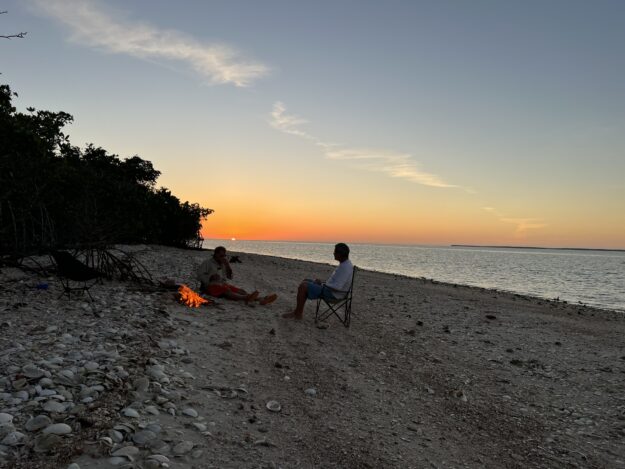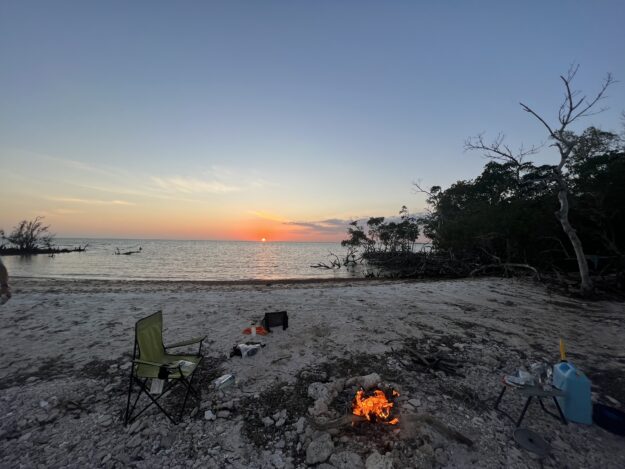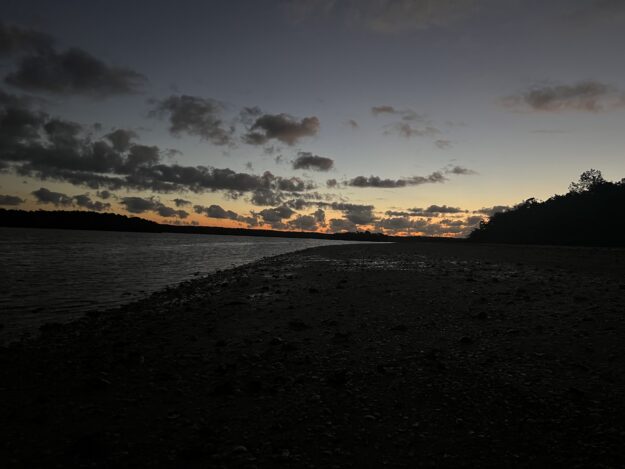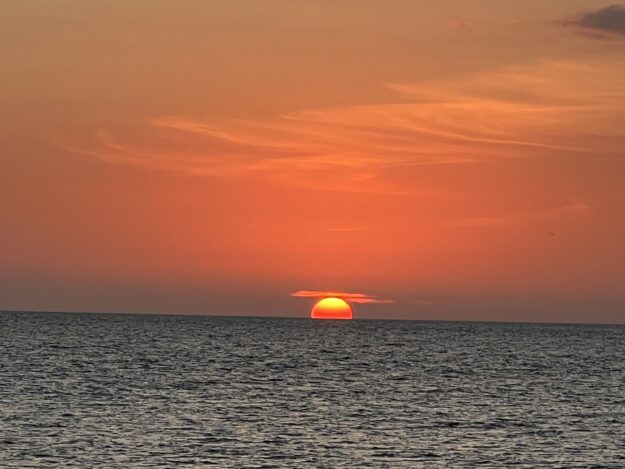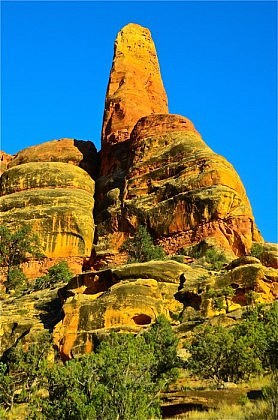Everglades National Park in South Florida is one of North America’s true ecological gems. Everglades was designated as a National Park in 1947 and roughly 2,000 square miles was designated as the Marjorie Stoneman Douglas Wilderness in 1978. The Park encompasses roughly 2,300 square miles of the larger South Florida Everglades ecosystem, a system of marshes and prairies roughly 4,000 square miles in size. The entire Everglades system is fed from the north by freshwater flowing towards the ocean, mainly from Lake Okeechobee. This unique ecosystem is dominated by sawgrass marshes, freshwater sloughs, swamplands, and wet prairies. The tropical Sawgrass is in the sedge family and can grow up to nine feet tall in the waters of the Everglades. Sawgrass marshes were the inspiration for the title of Marjorie Stoneman Douglas’s book on the everglades “River of Grass”. Dense areas of Sawgrass are favorite nesting areas for the American Alligator. Freshwater sloughs are main routes of freshwater movement through the Everglades ecosystem. Shark River Slough and Taylor Slough are the two main slough within Everglades National Park. Sloughs are teeming with many freshwater fish species, alligator, snakes, and many aquatic plants. Wet prairies and freshwater swamps contain more plant diversity due to their slight elevation. These areas support a vast array of invertebrates, plant life, and small mammals that attract wading birds and alligators. Areas of dry land respite can be found on the Hardwood Hammocks raised above the water level. These hammocks support larger shrubs and trees such as the Live Oak. Hammocks are home to owls, birds of prey, snakes, rodents, racoon, and bobcat.
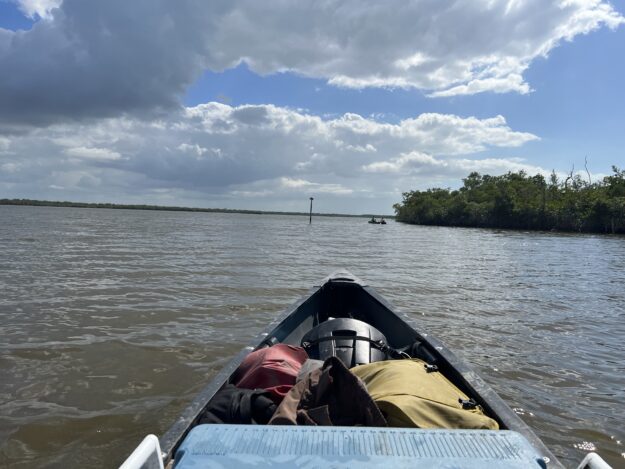
All the freshwater from flowing through the Everglades ecosystem is moving south towards the Gulf of Mexico and Florida Bay. Where freshwater meets saltwater, the Everglades boasts the largest contiguous system of mangrove trees in the world. The Red Mangrove, the Black Mangrove and the White Mangrove have all adapted to thrive in the brackish water ecosystem. Mangrove forests are vital for trapping sediment to help stabilize coastlines against storm surges. The mangrove ecosystem supports many small species in the brackish estuaries such as snails, crabs, shrimp, and oysters. Terns, gulls, pelicans, grebes, osprey, hawks, roseate spoonbills, and egrets all use the mangrove trees for feeding and raising their young. Also, within this brackish water ecosystem thrives the American Crocodile. While preferring the salt water, the Crocodile is found in both fresh and salt water. The Everglades is the only place on earth where Alligator and Crocodile exist together.
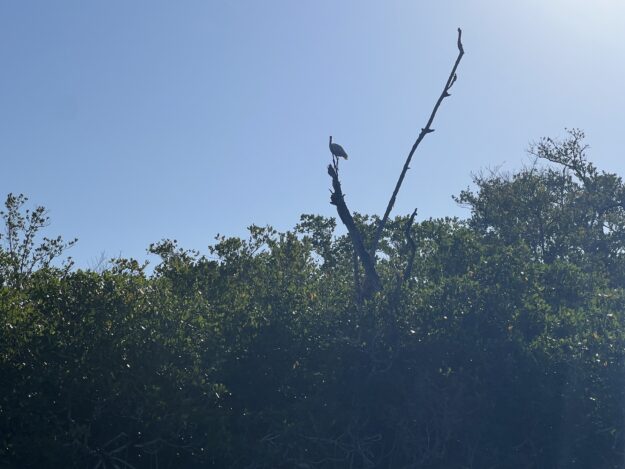
As you can see, Everglades National Park plays host to an ecosystem that biodiversity is among the greatest in the world. Immersing yourself in this special place for a week is a true Big Wild Adventure! The route that Big Wild Adventures follows is setup to allow us time in all the various ecosystems the Park has to offer.
Our Everglades Adventure begins with the pre-trip meeting in Miami, FL, the night before the first advertised day of the trip. This meeting will take place in the trip base hotel at the time your guide assigns. This meeting will cover a basic safety briefing, a talk about the route we will be paddling for the week, and we will hand out any gear that needs to be distributed. Our first morning will be shuttling from the hotel in Miami to Everglades City where we will pick up our canoes and safety gear for the week. After packing the canoes, we will shave off at the Park boat launch for our first day on the water! Our paddle starts by following the Canoe Wilderness Waterway in what we call the “swamp side” of the Everglades. The first three days will be paddling in the freshwater swamps and camping on a combination of hardwood hammock sites and campsites set on wooden “chickees”. These “chickees” are wooden platforms raised in the middle of the swamp with tenting areas and bathrooms. Spending the night out on the water, listening to the sounds of the Everglades around you is an experience!
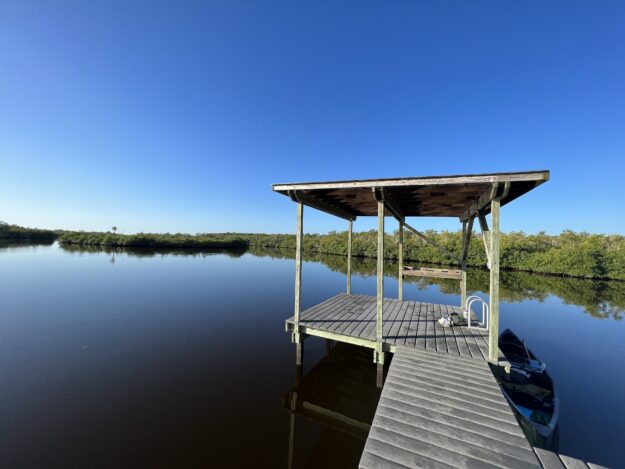
The second half of our adventure will be in what we call the “coastal side” of the Everglades. Our paddle takes us through the brackish water mangrove ecosystem towards the numerous keys that dot the coastline. Our next three days will be spent paddling the coast, exploring the seashore ecosystems, and enjoying beach campsites each night. Sunsets, swimming beaches, tidal pools and beachside campfires will be our days as we paddle back towards Everglades City. Our last morning of the trip we will paddle back into the “swamp side”, stop for a short nature hike on a hardwood hammock and end our adventure with southern fried food and sweet tea in Everglades City. Your trip officially ends when we transport you back to the hotel in Miami.
Paddling in the Everglades is a unique experience and there are a few considerations when thinking about joining one of our trips in Everglades National Park. At Big Wild Adventures we always like to find Wilderness areas (big W) where few other people travel… we like the solitude. The Marjorie Stoneman Douglas Wilderness is different in that motorboat activity is still allowed in most places. It will not be unusual to see or hear a motorboat from time to time, but we do our best to avoid the mechanized travelers. We run our trip in February to minimize heat, potential for dangerous weather and minimize mosquitos. However, this is south Florida so mosquitos and heat will always be present. To combat the heat, we recommend a sun shirt with long sleeves and an optional hoodie, a towel or sarong to cover your legs while in the boat, a sun hat with full brim, high quality, polarized sunglasses, and plenty of sunscreen. Staying hydrated is crucial so having a good Camelbak type bladder system will make drinking water easier while you are busy paddling. February is when the mosquitos and no see-ums typically tend to be at their least… but this is still significant. Ample amounts of bug spray and a head net with no see-um netting is highly recommended. We will setup a mesh canopy tent at camp and have bug deterrent to help keep them away. There will be bugs around, comes with the watery territory! One last gear note, you will not be able to stake your tent down on the wooden “chickees”. Bring a freestanding tent and sand stakes. Big Wild Adventures will be returning to Everglades National Park February 16-22, 2025 for a six-night seven-day excursion. We hope to see you in sunny south Florida next winter!
